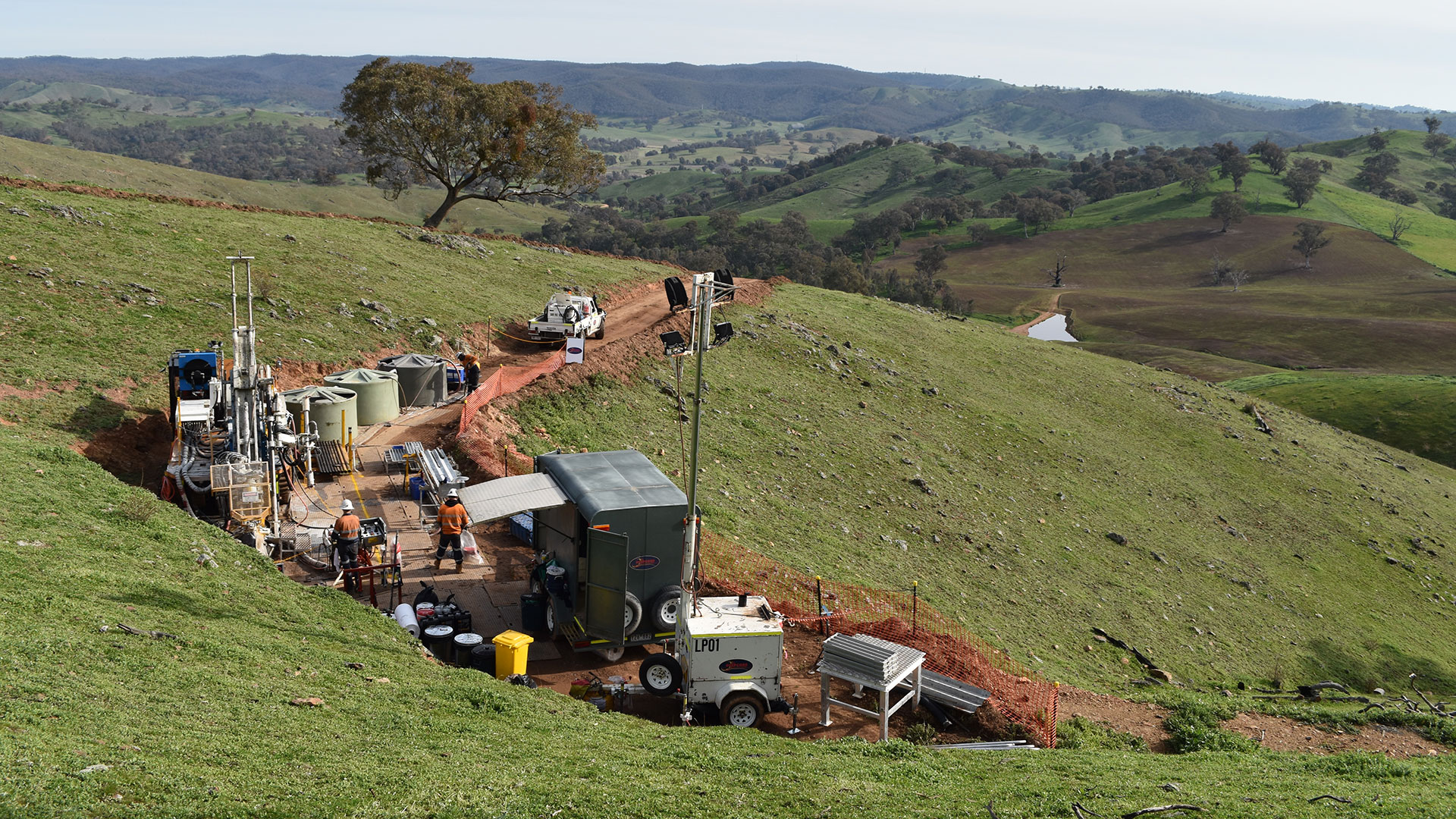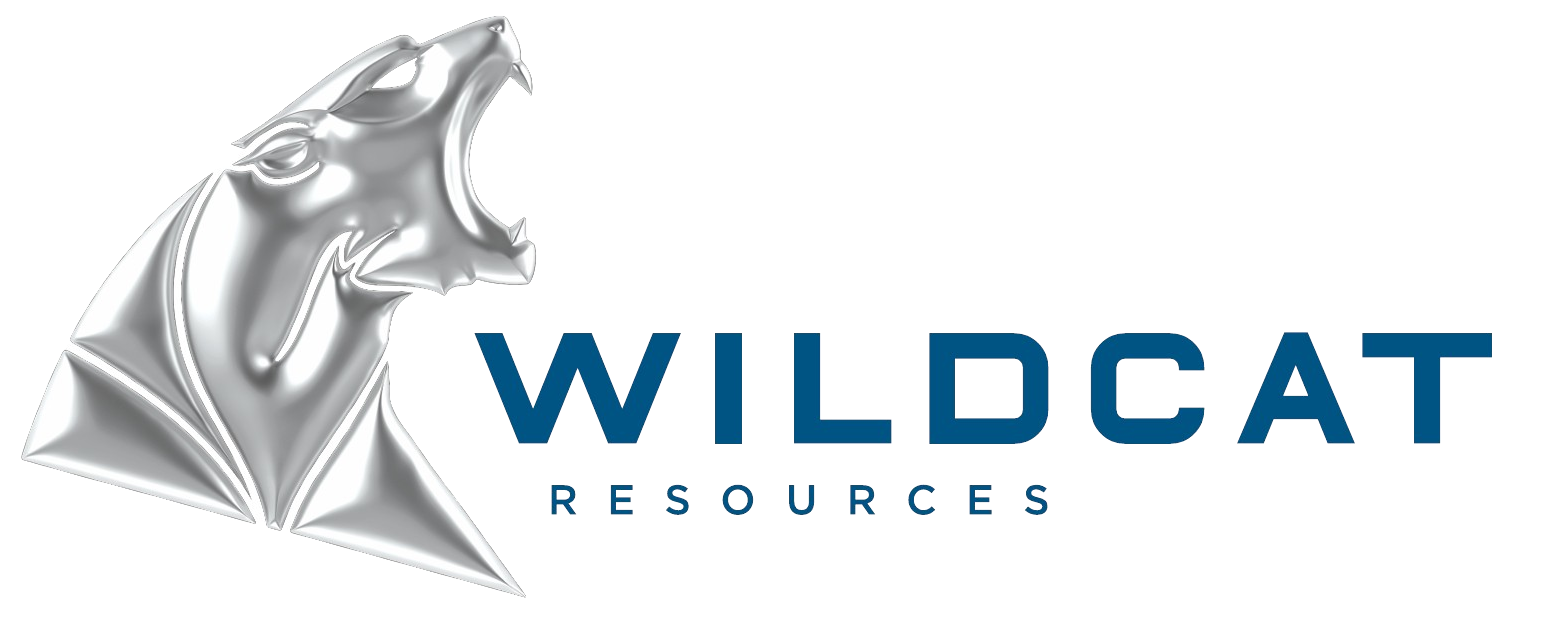
Mt Adrah Gold Project
Lachlan Fold Belt NSW
Project overview
The Company has a significant land holding situated along the Gilmore Suture within the highly-endowered Lachlan Fold Belt, NSW. Some of the largest gold orebodies in the world sit within this region. The Project hasn’t been systematically explored since the 1980’s, with most recent exploration attention focusing on the Hobbs Pipe gold deposit which has a Mineral Resource estimate of 20.5Mt @ 1.1g/t Au for 770,000 oz of contained gold – commencing from surface and extending to 800m depth where mineralisation is yet to be closed-off by drilling.
Geology
The Mt Adrah Project comprises 493 km2 of tenements Stradling 52km of strike of the Gilmore Suture Zone. The Project is prospective for intrusive-related gold systems (IRGS) such as Hobbs Pipe (other prominent examples of this deposit type include the 5Moz Kidston gold deposit in Queensland and the 16Moz Fort Knox gold deposit in Alaska); narrow and stockwork gold veins; epithermal gold deposits; and volcanogenic massive sulphide (VMS) deposits.
A single 180m diameter monzodiorite intrusion with a vertical pipe-like geometry hosts the Hobbs Pipe Gold Deposit. There are numerous occurrences of mineralised monzodiorite extending for over 1km to the southeast of Hobbs Pipe associated with strong alteration and anomalous geochemistry suggesting that the gold system could be much larger. Several parallel gold reefs occur proximal to Hobbs Pipe, including the Castor and White Deer Reefs. Previous drilling intersected 10m at 17.7g/t Au from 506m (Castor Reef) and 1.2m at 58.6g/t Au from 624m (White Deer Reef). Wildcat completed 3,600m of RC drilling in April 2023 targeting additional Hobbs Pipe-style gold deposits extending up to 1km southeast of Hobbs Pipe. The drilling successfully intercepted monzodiorite, confirming the potential for more pipes and providing encouragement for further work. This supports the Company’s previous successful drill program in 2020 testing the high-grade reefs.
Since acquiring the Mt Adrah Project, Wildcat has completed over 7,000 soil samples regionally and these have identified several gold prospects including Hillas Creek-Yaven, Upper Spring Creek, Diggers Creek, Hill 303, and Bangadang-Nacki Nacki.The Company has also completed IP proximal to Hobbs Pipe and a high-resolution drone aeromagnetic survey in a 30km2 area that included Hobbs Pipe.
Project Potential
The Diggers Creek Prospect is a broad area comprising a few sites of historic mining from shafts and shallow pits. Previous channel sampling across reef zones in workings returned 26.3g/t Au and 2.03g/t Au. Outcrop samples between Diggers Creek and Highway prospects returned 2.94g/t Au and 2.11g/t Au. Follow up work is required to appraise this area. No drilling has been undertaken in the Diggers Creek area.
The Hillas Creek area was previously mined by small pits and shafts with depths greater than 10m and extending over an area of greater than 2km. Samples from mullock include 14.88g/t Au and from a quartz-veined shear zone in historic workings 6.40g/t Au. An outcrop sample collected 2.5 kilometres north of Hillas Creek, returning 26.1g/t Au and 7640g/t As, has received no follow up work. Soil sampling by Wildcat over the Hillas Creek trend has returned linear coincident gold-arsenic anomalism that requires further investigation. There has been no drilling undertaken in this area.
Historic workings at Hill 303 Prospect and the nearby Hill 303 West Prospect, located 2km to the west, comprise scattered pits, trenches, and a few shafts. Mineralisation has previously been described as similar to the Adelong Gold Field mineralisation. Rock chip sampling has returned numerous anomalous gold values to a maximum of 3.24g/t Au from mullock and 1.93g/t Au from outcrop. Previous RC drilling to 78m depth covering 130m strike extent at Hill 303 returned broad low-grade zones of 22m at 0.15g/t Au, 8m at 0.13g/t Au and 12m at 0.26g/t Au.
The Bangadang Area is located 6km southeast of Hobbs Pipe and comprises several zones of historic gold production from shafts and shallow pits. Mineralisation is associated with shear-hosted quartz veins and breccias. Vein width is approximately 0.5m on average with structures persisting from tens to hundreds of metres. Previous rock chip and mullock samples returned grades of 13g/t Au and 51.3g/t Au (Breccia Lode Reef), 8.21g/t Au and 1.93g/t Au plus a 3m channel sample of 7.22g/t Au from the termination of underground workings (Southern Cross Reef); 24g/t Au, 36.8g/t Au and 10.43g/t Au from mullock (Comedy King Reef); and 8.97g/t Au, 77g/t Au and 6.98g/t Au from mullock (Nacki Nacki workings).
The Nacki Nacki prospect has been interpreted as a possible weathered cap and alteration halo sitting above a Hobbs Pipe-style intrusive. Recent reconnaissance rock chip sampling by Wildcat has returned high-grade gold results of 7.23g/t and 12.7g/t. Only six air track-percussion holes to a maximum depth of 48 metres have been undertaken to test the potential of this area. Results include 2m at 0.74g/t Au from 12m, 4m at 0.95g/t Au from 12m and 2m at 0.75g/t Au from 24m, all from the Breccia Lode Reef.
For the past two decades, exploration has been focussed almost exclusively on the Hobbs Pipe resource with no systematic exploration of the broader tenement area. Potential exists for new discoveries along regional-scale structures that are associated with zones of known mineralisation. Wildcat continues a campaign of modern geochemical, geophysical, and geological mapping techniques to define drill targets to realise the potential of these areas to identify high grade gold and bulk tonnage gold deposits.
Community
Community consultation is a key component of Wildcat’s activities, and proactive community consultation is required by the NSW Resources Regulator as a condition of operating a mining or exploration lease. Copies of our annual community consultation reports are available upon request.

